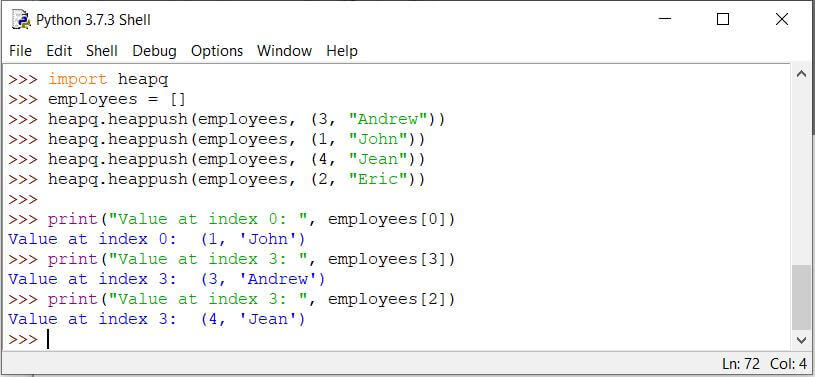

If it returns true, it means the queue is empty. The empty() function returns a Boolean value. To check if there exists any element in the queue, the empty() function is used. To pop and return the items from the queue, the get() function is used: print(p_queue.get())Īs you can see all items are dequeued. The put(priority_number, data) function takes two arguments: the first argument is an integer to specify the priority number of the element in the queue, and the second argument is the element that is to be inserted in the queue. We will use the key as the priority number of the element and the value to be the value of the queue element. In a Python dictionary, data is stored in pairs that are a key and a value. Now let us sort the tuple using sorted() method: sorted(mytuple) In the following line of code, we will create a tuple and implement Priority Queue with a tuple: mytuple = ((1, "bread"), (3, "pizza"), (2, "apple")) Whereas, the sorted function always returns the sorted sequence and does not disturb the actual sequence of a tuple. The difference between the sort and the sorted methods is that the sort method does not return anything and it makes changes to the actual sequence of the list. To sort out a tuple, we need to use the sorted function.

Since you cannot change the elements in a tuple, tuples do not provide a regular sort function like lists. To implement Priority Queue with tuples, we will create a tuple first with elements of a priority queue and then we will sort the tuple. But the elements of a list are changeable and the elements of a tuple are unchangeable. Both lists and tuples are ordered data structures of Python and allow duplicate values. Python tuples and lists are the same to some extent. Hence, it takes time to maintain the order of elements according to their priority. List implementation of Priority Queue is not efficient as the list needs to be sorted after every new entry. When the first element is appended to the list, there is no need to sort the list. Just create a list, append elements (key, value), and sort the list every time an element is appended. Implementing a Priority Queue using a list is pretty straightforward. The key quantifies the priority of the element. An element in Priority Queue always contains a key and a value.


 0 kommentar(er)
0 kommentar(er)
